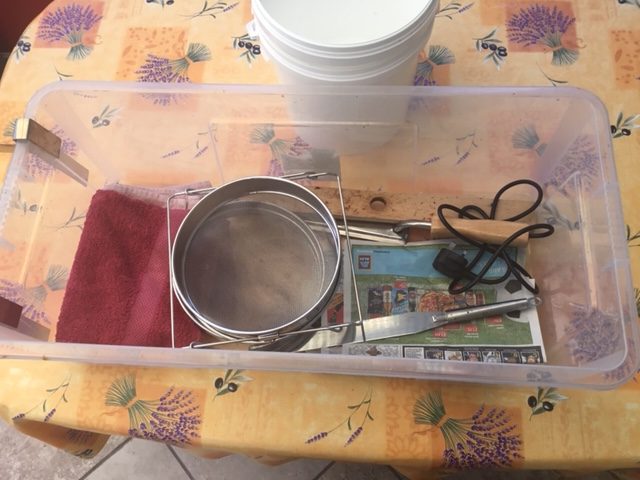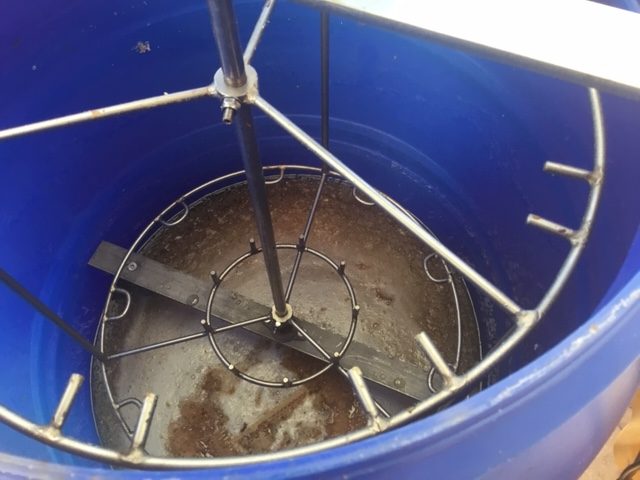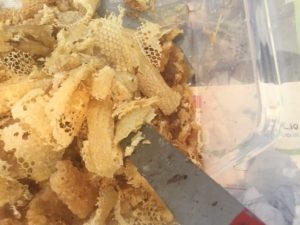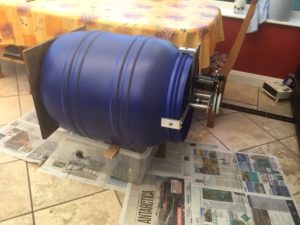OBKA Tutors Blog #12 – Honey Extraction
I keep all of my honey extracting kit in large plastic box, which I also use as the uncapping tray.
The kit consists of: knife, newspaper, towels, wood bar with hole (for the frame ends to sit in,) and frame rests.
The conservatory is a good place for me to extract as it is bee-proof and hot when closed up. I work in a line, with full supers one side, then the uncapping ‘tray’, extractor and finally empty super to put the extracted frames back into. The newspaper is for the table and floor, as it’s easy just to place another sheet on top once it’s messy and sticky.
Honey extracting kit

Extracting setup - plenty of newspaper!

As soon as I get the supers home I start removing the capping before the temperature drops in the honey. Working while it is still warm in a warm room makes everything so much easier. I like to cut the cappings off with a knife, but you can use an uncapping fork, bread knife or any thing that opens up the cell. The trade suppliers will even sell you a heated knife for the purpose, but it’s not really necessary!
Make sure you open all the cells on the frame. The cappings will drop down into the tray and at the end of the session I will put these into a sieve to drain.
Once uncapped I try to load the extractor evenly to balance the weight as it spins. The extractor sits on a 3 wheeled wooden frame. I put a folded towel under 2 of the wheel which help dampen the imbalance when starting. My extractor is a home made job, comprising of a Thorne 9 radial frame which is mounted in a food safe barrel driven by 180w sewing machine motor.
Removing the cappings

Home made extractor

Once loaded I spin slowly at first and increase speed as the frames empty. As usual with spring honey, some has started to set in the cells and will not extract. I will have to dealt with this separately by scraping down to the mid rib of the frame and putting it into a warming cabinet to melt the honey then putting thorough a sieve.
Once the honey has filled the extractor I drain it off into (food grade) buckets. I do all of my filtering at a later stage as trying to filter now is too slow and holds up the process. Once I have finished extracting I leave the cappings in a sieve to drain overnight. The extractor I lie on top of the plastic box to drain. To clean up I just wash down with cold water and allow for dry ready for the next time.



To see how a commercial bee farmer extracts honey see the following video by The Norfolk Honey Company on YouTube:
David Lord